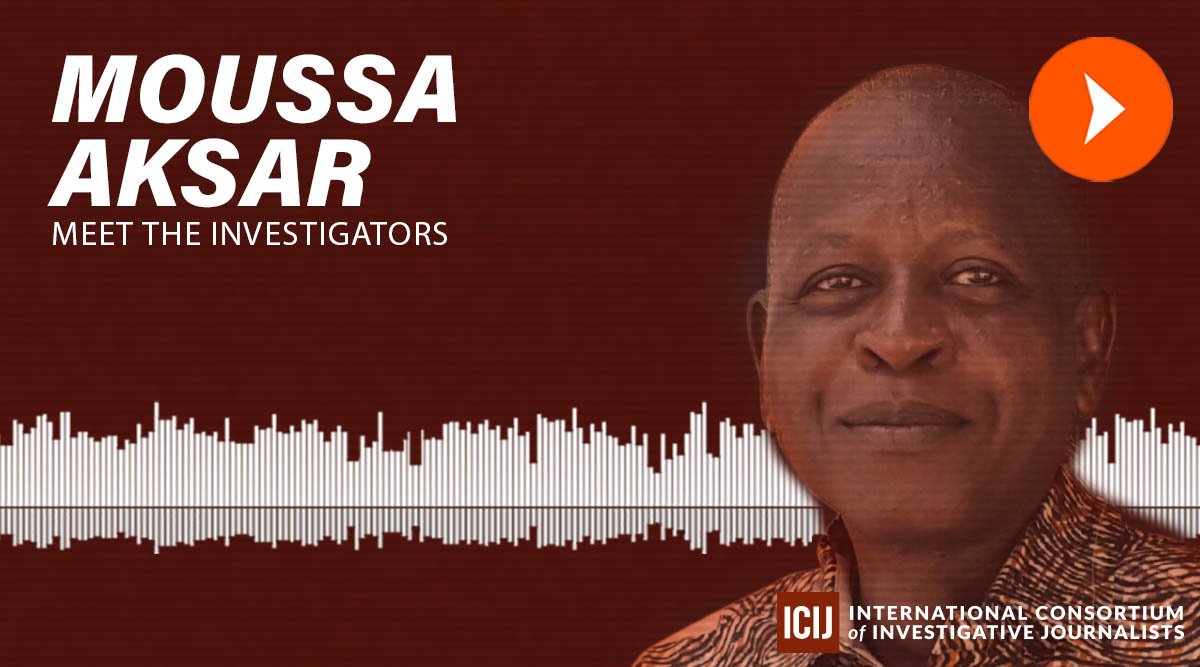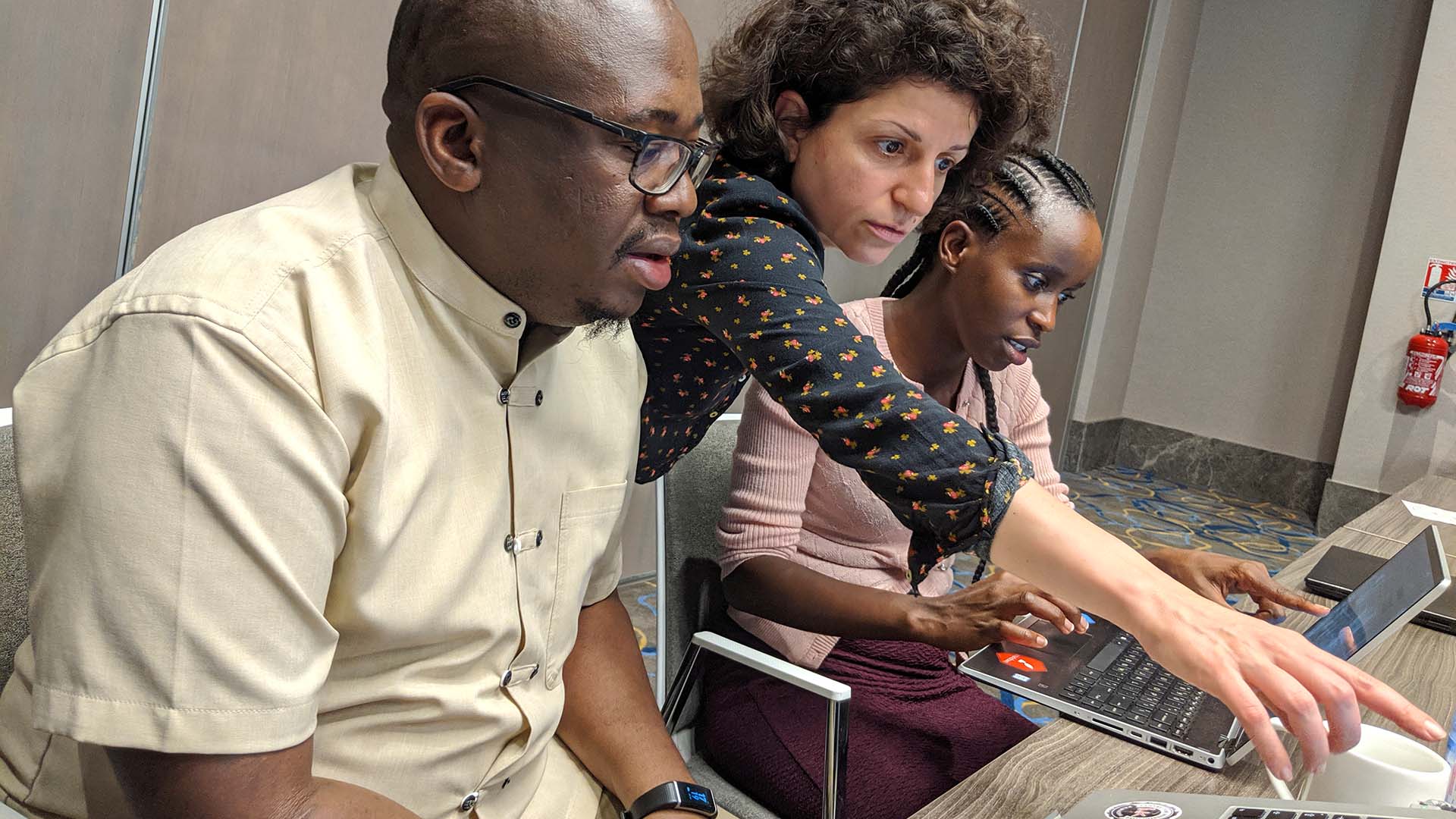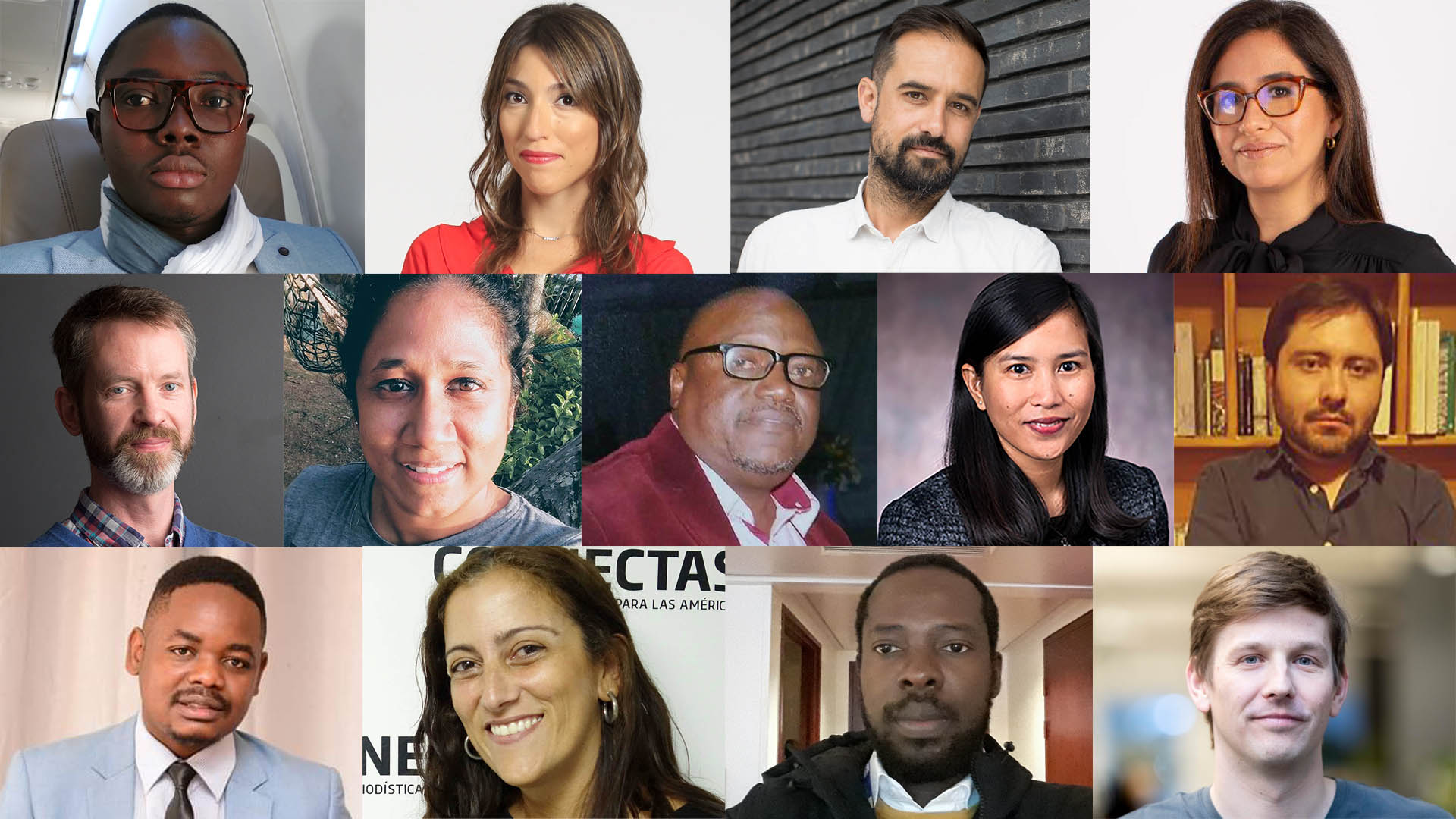Woman-led newsroom in India ‘reframes the conversation’ in new documentary
The film follows news outlet Khabar Lahariya as its team of female reporters investigate patriarchal abuse, government corruption, rape culture and Hindu extremism.
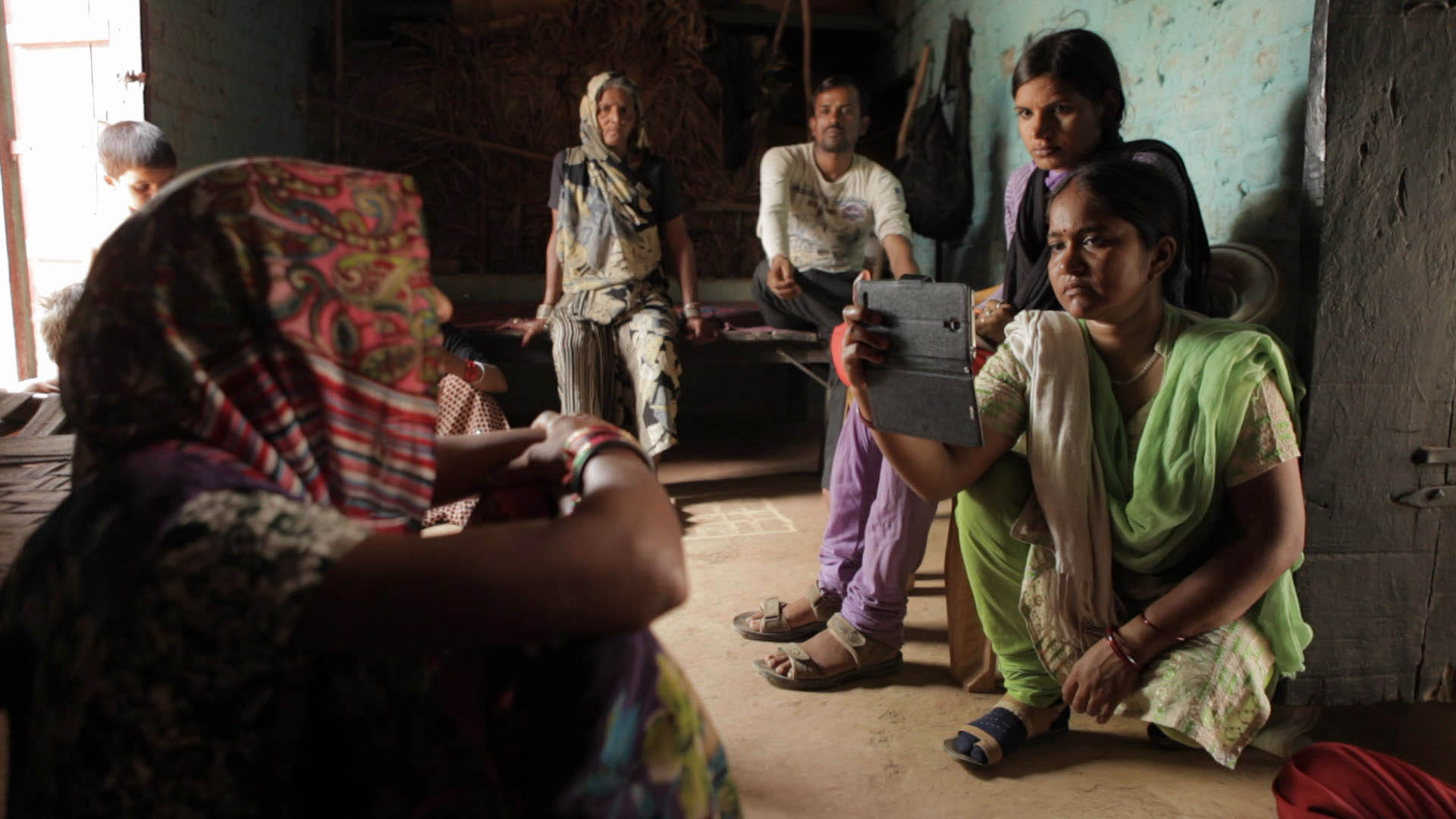
In India’s male-dominated media scene, where caste still matters and women are afforded few opportunities, an online photo story about a female-led newsroom staffed by lower-caste reporters was all it took to capture the attention of two moviemakers and spark an ambitious five-year film project.
The resulting documentary, Writing With Fire, follows a group of Dalit women, India’s lowest caste, who run a successful news outlet called Khabar Lahariya in Uttar Pradesh. In an interview with the International Consortium of Investigative Journalists, filmmakers Rintu Thomas and Sushmit Ghosh tell how they experienced the challenges faced by the women who run Khabar Lahariya as they investigated a range of issues, including patriarchal abuse, government corruption, rape culture and Hindu extremism. The film is a part of the Double Exposure 2021 film festival, which features movies at the intersection of investigative journalism and film. The festival, which counts ICIJ as one of its partners, runs from October 13-17. Discount tickets are available using the code ICIJDX21.
How did you first encounter Khabar Lahariya, the reporters you follow in the film, and why did you want to make a film about the news outlet?
Rintu: We saw a photo story online that a photographer had done on the work of Khabar Lahariya and the idea of Dalit women running a newsroom sitting in the heart of Uttar Pradesh was just a phenomenal image of a story that spoke to us. We didn’t know about their work which is quite surprising to us. They’ve been around for about 14 years and when we met them, they were at this beautiful cusp of transition. They’re unfettered rural women who are aware of the limitations of print and want to grow their impact to draw in more women. Using digital in a smart way and making it their own felt like just the right story. Our interest lies in mostly telling stories about outliers, people who are outside the system and chipping away at it on their own in powerful ways. We love an unlikely protagonist who has something to offer that the world is not expecting from them.
So many things spoke to us. And we realized that this was going to be a long project because up until then, Sushmit and I had been making films in India, and they’d all been nonfiction, but this felt like a story that needed more room to breathe and [for us to] sink our teeth into. So we took off on a journey which we thought would take two years, but it eventually took five, and that’s how Writing With Fire was born.
Can you tell us more about the media landscape in Uttar Pradesh, and how Khabar Lahariya entered the scene? What does the outlet do that’s different?
Sushmit: Uttar Pradesh, like much of the country, is a media landscape that is male-dominated, typically upper caste. For context, The Editors Guild of India, which is the most powerful representative body for journalists in the country, has only one Dalit journalist on the panel and that’s a Khabar Lahariya woman journalist. Uttar Pradesh, specifically the regions that they work in, the profile of journalists is primarily upper caste men. There are no independent women journalists working there, except the women at Khabar Lahariya. In that sense, that really makes their presence quite prolific because the lens with which they are viewing stories is very, very different from how mainstream media is reporting it.
[Before the] shift from print to digital they were printing about five thousand papers every two weeks, so they calculated their readership to be roughly fifteen thousand a month. Now they’re growing exponentially in the millions month by month. [It] speaks for the power of their journalism and the fact that the demographic has expanded. Now they have women who typically would not have access to newspapers who are now on their phones absorbing a lot of this content that Khabar Lahariya is putting out. They’re savvy, just like any other news outlet. They’ve gotten into podcasts [and] they used 2020 as a year where they reinvented themselves.
A lot of their news reportage is about issues that you wouldn’t typically expect a man from those belts to be talking about. For instance, Covid health care centers-are they prepared for women? Or the escalating rise in domestic violence that was brought on by Covid, which is a global phenomenon, but nobody was talking about it. So that’s essentially their kind of journalism. It’s interesting because when we were there for five years in the ground, we didn’t see any women journalists operating over there, except women at Khabar Lahariya.
Rintu: They started off as a social experiment. An NGO went in and got a bunch of women together and said, “If you were to create a newspaper that you report on, what would that look like?” So it was a newsletter and they called it “Mahila Dakiya”, which is “post-woman.” The women started telling their own stories in their own local dialect and language and that experience was super powerful for them, so when the NGO moved out, women wanted to continue. Some folks from the NGO broke away and helped them set up Khabar Lahariya which literally translates to, “waves of news.” From there, it grew out to be a newspaper. It started out with one district, expanded out to many, and that’s how they’ve really built their credibility and, and very deep-rooted existence in those parts of Uttar Pradesh, which at that time were actually completely media dark.
They are questioning what is considered newsworthy? What is news? Who is counted? … The feminist lens is what completely distinguishes them from the clutter that news is at the moment. — Rintu Thomas
What’s the significance of having a media outlet run by Dalit women?
Rintu: I think the question is about the lens. They are questioning what is considered newsworthy? What is news? Who is counted? Who decides that this story should be told? And that’s at the forefront of all the reporting that they have done consistently. The feminist lens is what completely distinguishes them from the clutter that news is at the moment.
Sushmit: Having a diversified newsroom is a global conversation right now. In the west you have middle-aged white men who are essentially leading all decisions around what is considered news and newsworthy or not. But what happens when you let in people of color into positions of organizational leadership? Khabar Lahariya is a unique model because it’s entirely led by women. And these are not just women. These are women who are literally at the bottom of India’s social pyramid. So, what happens when they essentially reclaim this position of power and start rewriting the narrative? What does their lens look like? That’s what a diversified newsroom can do. The fact that they’ve grown exponentially, since they went digital speaks volumes to the power of their work and their popularity in the region.
The film shows the journalists transitioning from print to digital platforms. Can you speak about the digital divide there and the role of technology in Khabar Lahariya’s work?
Sushmit: I think India is one of those peculiar countries where more people are aware of cell phones than they are of books. We have one of the greatest penetrations of mobile phones in the world right now, after China. Internet and data plans are very cheap. The internet is really readily accessible, right from Tik-Tok to Facebook to Twitter. It is a social media market. It’s something that the women essentially decided to pivot to six years ago, quite wisely, in retrospect. It was a global conversation. You had the New York Times debating whether or not they should shut down their hard copy and shift entirely into digital. Parallelly, you had Dalit women sitting in an attic in the back of a village in Uttar Pradesh having the same sophisticated debates about readership, volume and stories.
While literacy levels, specifically in Uttar Pradesh, are fairly low, internet penetration is very high. Because the method of delivering news has now become digital, there is greater access to Khabar Lahariya’s own work, which ironically, has led to a significant rise in the popularity of these women journalists.
Rintu: Their own level of confidence has grown manifold, and we’ve watched it from behind the lens. They would report, produce and market all on their own. With the advent of digital people know them by their names. They are popular, they do their own shows. Their formats have diversified and that’s led to a new kind of confidence. Sunita, who is the secondary character in the film, her own body language of how she’s presenting herself, how she’s putting herself in the crowd with a phone camera has dramatically changed and that was quite special to witness.
How do local communities in Uttar Pradesh feel about Khabar Lahariya?
Rintu: It ranges from curiosity to mansplaining and derision — as you see in the film — to respect. It’s a wide spectrum because people are not used to seeing Dalit women with a camera, asking intelligent question, negotiating smartly, following up on stories and calling out for accountability. That’s never happened, and to do it in the most non-violent way, stumps them. That’s the range that we’ve seen amongst their peers.
Initially, people [would] just be like, oh what is she going to do with a phone camera? How can a woman be a journalist? In the communities that they go out to report in, there is a very tacit trust and that really helps. And it’s helped us in the five long years of filming because we would just bank on their credibility and tag along. Whatever trust was given to them would automatically be offered to us.
The documentary depicts the journalists’ life at home as well as their work in the field. Can you talk about why you decided to focus on the women’s personal and professional lives?
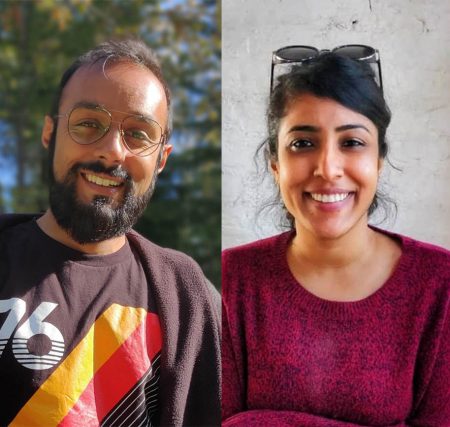
Sushmit: I think the newspaper was essentially a trojan horse to talk about the interior lives of these women because whether the newspaper was successful or not was incidental to us. What we were really interested in was the stories of these outliers, really protagonists. It was a David and Goliath story. You would never expect Dalit women living in in these parts of Uttar Pradesh to actually be able to reframe the conversation because the very fact that you have women stepping out of their homes in itself is assigning revolution. The fact that these are women stepping out to work as journalists is something that was unthinkable of, unheard of, and that is what we were interested in.
I think that the negotiations are universal; A mother having to leave her kids behind because she has to report on a story from the ground. A wife being challenged by a husband because she’s not at home to cook food because he’s hungry. Or the dynamics between women within an organization and how it plays out. These are visuals that are missing from India’s mainstream narrative around the Dalit identity. You don’t see Dalit women in positions of power and that’s something that we were drawn to. We felt that it would be one thing filming them as journalists in the field, but what happens when they go back home in the dark, walking through these allies? How do their families respond to them? What are these negotiations they need to make within the battlefield that they call home, whether that be [refusing] marriage, proposals, or negotiating with your husband about what your boundaries are, or raising two boys, [or being] separated from your husband and [thinking] what will society think of me now?
Those are the conversations that drew us in so the challenge was, how do you stitch their lives inside their homes and their lives outside into a narrative that would make sense to an audience. That fundamentally was something we were resting on right from the beginning and it went on to become one of the biggest challenges to edit. How do you balance out their interior worlds and the very real physical challenges that they face from a day-to-day basis?
Rintu: In a story like this it would be only half told if you don’t go inside because these are women reporting on communities that they themselves are a part of and so they are [making] visible issues that they are not only reporting, but that they are a part of. So the personal was very political.
Dissent is core to the functioning of any democracy. One of the core principles of journalism is to be able to constantly question and challenge what the powers-that-be are doing. — Sushmit Ghosh
The film also focuses on the rise of Hindu nationalism and Prime Minister Narendra Modi. Do you feel that the changing political atmosphere has had an effect on press freedom in the country?
Sushmit: It’s a global conversation, to be honest. It’s something that you have witnessed from the Philippines, all the way to the U.S. and Trump. I think that it’s a challenge the world now faces, the shrinking space for free press. I think this conversation [is] around the importance of the fourth estate to ensure the vibrancy of any democracy on this planet. Wherever you have the rise of the right, the usual pressure points will be artists, writers, historians, journalists, people who have historically presented their own ideas of what democracy is, upheld the values and the importance of dissent. Dissent is core to the functioning of any democracy. One of the core principles of journalism is to be able to constantly question and challenge what the powers-that-be are doing. So, it is a challenging time in India and in any other part of the world to be an independent journalist.
Also, [there’s] this whole idea of how the media has been monetized, how big money has been pumped in where there is little space for independent journalism. So, it’s a challenge but I think the Khabar Lahariya model is interestingly a counter position to that. I think the women at Khabar Lahariya have redefined what it means to be a journalist. Do you really need to go to journalism school to be a journalist? Do you really need to be working in a large journalistic institution to qualify as a journalist? Do you really need that kind of technology and equipment to be a journalist? Or do you need to be working with the ethos of what journalism is to qualify as a journalist? They’ve essentially rewritten the script of what journalism could be in the future. The collective power of people who’ve never been heard now platform themselves, ironically using social media, and are championing the voice of the voiceless right now.
What’s next for Khabar Lahariya? How are the journalists faring today? What has been the reception to the film locally?
Rintu: The film has not been shown in India yet. We’re still forming our India release, but when they themselves saw the film right before the Sundance World Premiere, they were very emotional. Seeing themselves through the eyes of somebody else, five years of their lives, was very special. The film captures a very important moment in their personal lives, the lives of the newspaper and also of the country. That has been our biggest reward, the fact that the film speaks to them in a powerful way. The film was born right in the heart of Covid and Khabar Lahariya has had its busiest two years. They’ve made new collaborations with organizations that want grassroot journalists reporting from the ground. They have always been a link between communities that have been disadvantaged and the administration. During Covid they just intensified that work, questioning the administration on access to healthcare. They’ve diversified. Because they’re such pros at using the digital medium, they’ve now started an online course, hiring and training more young women journalists from across the country. I’d say they totally used Covid in a very constructive way to expand, to experiment and to express themselves in absolutely new ways.
—
The Double Exposure Investigative Film Festival and Symposium runs from October 13 to 17. The virtual event includes a number of ICIJ speakers, including staff member Scilla Alecci discussing cross-border investigative filmmaking with ICIJ members Minna Knus-Galan, Susanne Reber and others. For discounted passes for the symposium or tickets for films, please use ICIJ’s discount code ICIJDX21.
